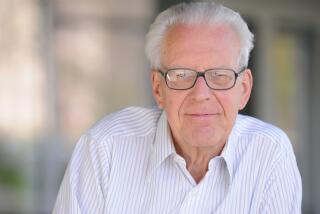Martin Deutsch, 85; Influential Physicist at MIT
- Share via
Martin Deutsch, a physicist at the Massachusetts Institute of Technology who worked on the Manhattan Project and later discovered an elemental form of matter, has died. He was 85.
Deutsch died Friday at his home in Cambridge, Mass. His family said the cause of death has not been determined.
“There was nothing in life that he didn’t want to understand. That was the hallmark of his life,” said Suzanne Z. Deutsch, his wife of 63 years.
Perhaps the leading scientific achievement in Deutsch’s career came in 1951 when he was 34. Deutsch confirmed the existence of positronium, a hydrogen-like atom without a nucleus that exists for as little as 1/10 of a billionth of a second. The discovery corroborated the quantum theory of electrodynamics for a two-particle system.
“It was a spectacular production on Martin’s part,” said Francis Low, MIT physics professor emeritus, who worked with Deutsch on positronium experiments in the school’s Laboratory for Nuclear Science.
Deutsch headed the laboratory from 1973 to 1979 and was succeeded by Low, who described Deutsch as “a remarkably knowledgeable man, a fire hose of information.”
Born in Vienna, Deutsch was the child of doctors. His mother, a psychiatry professor at the University of Vienna, became Sigmund Freud’s last pupil, and Freud appointed her director of his Training Institute of the Vienna Psychoanalytic Society in 1923.
A fervent anti-fascist, Deutsch said in a 1998 interview with the Boston Globe that he was “a product of my culture, which is the culture of Vienna Jews.”
At age 17, he moved to Zurich, Switzerland, after participating in the Austrian resistance to the fascists.
In 1935, he came to the United States with his mother. Though they intended to return to Europe within weeks, they stayed and settled in Cambridge.
Deutsch enrolled at MIT and earned a bachelor’s degree in 1937, then a PhD in 1941, completing in six years a course of study that typically takes 11.
He worked on the atomic bomb, concentrating on problems of fission as part of the Manhattan Project in Los Alamos, N.M.
After the war, Deutsch returned to MIT. “The next five or six years were harvest years for me. Ideas that had germinated during the war years led to others, and somehow, it seems everything I touched turned to gold,” he said.
Deutsch was a teacher and mentor of Henry Kendall, another MIT professor who won the Nobel Prize in 1990 for his co-discovery of the quark.
Deutsch retired from MIT in 1987.
In addition to his wife, Deutsch is survived by two sons, L. Peter Deutsch of Menlo Park, Calif., and Nicholas Deutsch of New York City.






